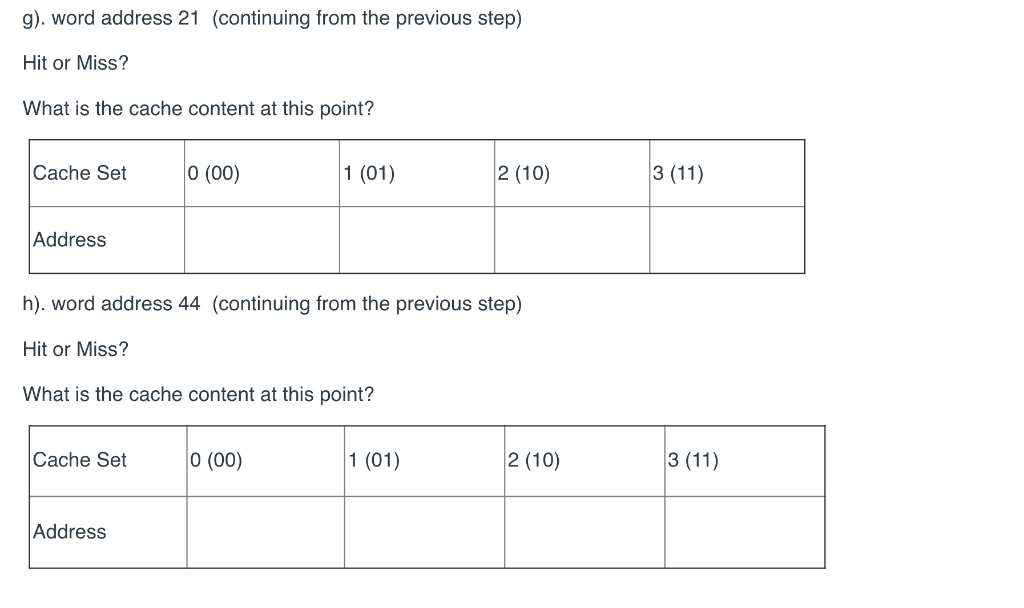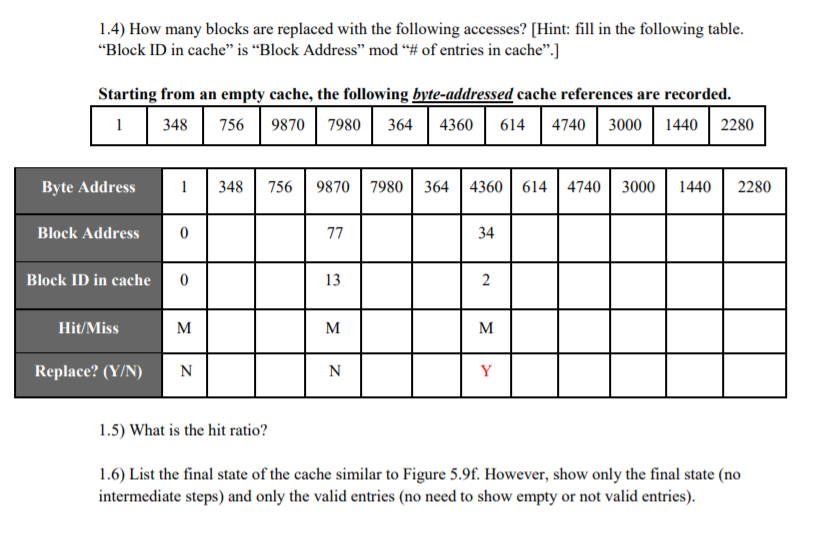

In this example, the URL is the tag, and the content of the web page is the data. For example, a web browser program might check its local cache on disk to see if it has a local copy of the contents of a web page at a particular URL. If an entry can be found with a tag matching that of the desired data, the data in the entry is used instead. When the cache client (a CPU, web browser, operating system) needs to access data presumed to exist in the backing store, it first checks the cache. Tagging allows simultaneous cache-oriented algorithms to function in multilayered fashion without differential relay interference. Each entry also has a tag, which specifies the identity of the data in the backing store of which the entry is a copy. Each entry has associated data, which is a copy of the same data in some backing store.

#Direct mapped cache hit or miss software#
Central processing units (CPUs), solid-state drives (SSDs) and hard disk drives (HDDs) frequently include hardware-based cache, while web browsers and web servers commonly rely on software caching.Ī cache is made up of a pool of entries. Hardware implements cache as a block of memory for temporary storage of data likely to be used again. Reading larger chunks reduces the fraction of bandwidth required for transmitting address information. For example, consider a program accessing bytes in a 32-bit address space, but being served by a 128-bit off-chip data bus individual uncached byte accesses would allow only 1/16th of the total bandwidth to be used, and 80% of the data movement would be memory addresses instead of data itself. In the case of DRAM circuits, this might be served by having a wider data bus. The use of a cache also allows for higher throughput from the underlying resource, by assembling multiple fine grain transfers into larger, more efficient requests.

Prediction or explicit prefetching might also guess where future reads will come from and make requests ahead of time if done correctly the latency is bypassed altogether. This is mitigated by reading in large chunks, in the hope that subsequent reads will be from nearby locations. it can take hundreds of clock cycles for a modern 4 GHz processor to reach DRAM. The buffering provided by a cache benefits one or both of latency and throughput ( bandwidth):Ī larger resource incurs a significant latency for access – e.g. There is an inherent trade-off between size and speed (given that a larger resource implies greater physical distances) but also a tradeoff between expensive, premium technologies (such as SRAM) vs cheaper, easily mass-produced commodities (such as DRAM or hard disks). Such access patterns exhibit temporal locality, where data is requested that has been recently requested already, and spatial locality, where data is requested that is stored physically close to data that has already been requested. Nevertheless, caches have proven themselves in many areas of computing, because typical computer applications access data with a high degree of locality of reference. To be cost-effective and to enable efficient use of data, caches must be relatively small. Cache hits are served by reading data from the cache, which is faster than recomputing a result or reading from a slower data store thus, the more requests that can be served from the cache, the faster the system performs. A cache hit occurs when the requested data can be found in a cache, while a cache miss occurs when it cannot. In computing, a cache ( / k æ ʃ/ ( listen) KASH) is a hardware or software component that stores data so that future requests for that data can be served faster the data stored in a cache might be the result of an earlier computation or a copy of data stored elsewhere.


 0 kommentar(er)
0 kommentar(er)
